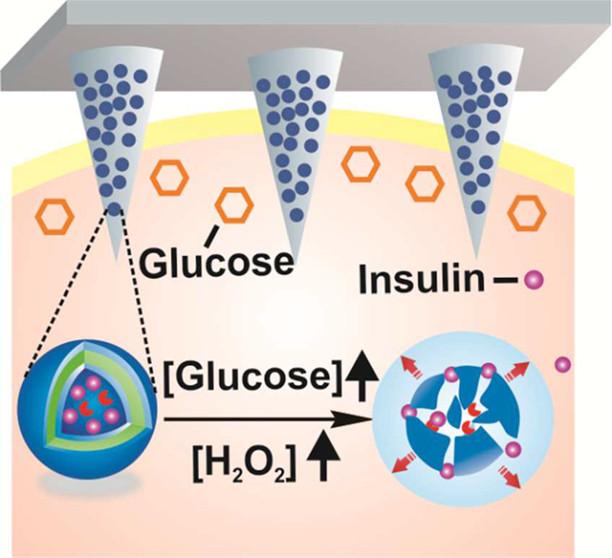The National Cholesterol Education Program (NCEP) issued major new clinical practice guidelines on the prevention and management of high cholesterol in adults. The guidelines are the first major update from NCEP in nearly a decade.
NCEP, which is coordinated by the National Heart, Lung, and Blood Institute (NHLBI), develops new guidelines as warranted by research advances. Earlier guidelines were issued in 1988 and 1993. An executive summary of the new guidelines, the �Third Report of the NCEP Expert Panel on Detection, Evaluation, and Treatment of High Blood Cholesterol in Adults,� also known as Adult Treatment Panel (ATP) III, appears in the May 16, 2001, issue of the Journal of the American Medical Association.
Key changes in the new guidelines are: more aggressive cholesterol-lowering treatment and better identification of those at high risk for a heart attack; use of a lipoprotein profile as the first test for high cholesterol; a new level at which low HDL (high-density lipoprotein) becomes a major heart disease risk factor; a new set of �Therapeutic Lifestyle Changes,� with more power to improve cholesterol levels; a sharper focus on a cluster of heart disease risk factors known as �the metabolic syndrome;� and increased attention to the treatment of high triglycerides.
The new guidelines are expected to substantially expand the number of Americans being treated for high cholesterol, including raising the number on dietary treatment from about 52 million to about 65 million and increasing the number prescribed a cholesterol-lowering drug from about 13 million to about 36 million.
�Americans at high risk for a heart attack are too often not identified and, so, don�t receive sufficiently aggressive treatment,� said NHLBI Director Dr. Claude Lenfant. �Yet, studies show conclusively that lowering the level of low-density lipoprotein, or LDL, the �bad cholesterol,� can reduce the short-term risk for heart disease by as much as 40 percent. Treatment may lower risk over the long-term-that beyond 10 years-even more. That�s why, while the intensity of treatment in ATP III is stepped up, its primary aim remains squarely on lowering LDL.�
According to ATP III, Americans at high risk for a heart attack include those with heart disease or diabetes, and many of those with multiple heart disease risk factors. The guidelines state that diabetes poses as great a risk for having a heart attack in 10 years as heart disease itself-and the threat from multiple risk factors can be equally great. The guidelines recommend these persons be treated as intensively as heart disease patients with lifestyle changes and medication.
To better identify risk, the guidelines include a tool that predicts a person�s chance of having a heart attack within 10 years. Based on newly analyzed data from the landmark, NHLBI-supported Framingham Heart Study, the �risk assessment tool� translates clinical conditions and lifestyle factors into a single, easy-to-understand category of risk. The tool calculates risk separately for men and women based on age, total cholesterol, HDL (the �good� cholesterol), systolic blood pressure, treatment for high blood pressure, and cigarette smoking. ATP III recommends use of the tool for persons with two or more heart disease risk factors.
�The new guidelines will help doctors determine heart attack risk more precisely than was possible before,� said Dr. Scott Grundy, ATP III chairperson and director of the Center for Human Nutrition at the University of Texas Southwestern Medical Center at Dallas. �That allows treatment to be more individualized. We now know that cholesterol-lowering treatment is more effective when its intensity closely matches the level of risk.�
�The ATP III approach looks at �overall� risk for a heart attack,� said NCEP Coordinator Dr. James Cleeman, �which means in the short- and long-term. That�s important because, although risk typically increases with age, the foundation for heart disease is often laid in adolescence and early adulthood. So Americans need to act now to prevent that future heart attack or heart disease itself. Every risk factor needs to be treated.�
Cleeman advises Americans to check with their doctor to learn their overall risk for a heart attack and what, if any, treatment is needed.
Other changes in the new guidelines include:
- Treating high cholesterol more aggressively for those with diabetes.
Besides their very high short-term risk for having a coronary event, persons with Type 2 diabetes also have a particularly high risk of dying from a heart attack. Type 2 diabetes, or noninsulin-dependent diabetes mellitus, is the most common form of the disease and affects more than 14 million Americans.
- A lipoprotein profile as the first test for high cholesterol.
A lipoprotein profile measures levels of LDL, total cholesterol, HDL, and triglycerides, another fatty substance in the blood. The prior recommendation called for initial screening with a test for only total cholesterol and HDL. The guidelines advise healthy adults to have a lipoprotein analysis once every 5 years.
- A new level at which low HDL becomes a major risk factor for heart disease.
ATP III defines a low HDL as being less than 40 mg/dL. Previously, a low HDL was less than 35 mg/dL. The change reflects new findings about the significance of a low HDL, and the strong link between a low HDL and an increased risk of heart disease. An HDL level of 60 mg/dL or more is considered protective against heart disease.
- Intensified use of nutrition, physical activity, and weight control in the treatment of elevated blood cholesterol. ATP III combines these steps into a new �Therapeutic Lifestyle Changes� (TLC) treatment plan.
ATP III recommends a more intense and effective eating plan than that previously used. The new diet reflects changes in Americans� eating habits, including a drop in saturated fat and cholesterol consumption. The new TLC diet includes daily intakes of less than 7 percent of calories from saturated fat and less than 200 mg of dietary cholesterol. It also allows up to 35 percent of daily calories from total fat, provided most is from unsaturated fat, which doesn�t raise cholesterol levels. (A higher fat intake may be needed by some patients with high triglycerides and/or a low HDL to keep their triglycerides or HDL from worsening.)
ATP III also encourages use of certain foods that contain plant stanols and sterols, or are rich in soluble fiber, to boost the diet�s LDL-lowering power. Plant stanols and sterols are included in certain margarines and salad dressings; foods high in soluble fiber include cereal grains, beans, peas, legumes, and many fruits and vegetables.
Additionally, the guidelines stress the need for weight control and physical activity, both of which improve various heart disease risk factors. For instance, weight control enhances LDL lowering and raises HDL, while physical activity improves HDL and, for some, LDL. �TLC is the first line of therapy for high cholesterol and, with the turbo-charge that ATP III gives it, it will be significantly more effective in lowering LDL than the previous lifestyle recommendations,� said Cleeman.
- Identifying a �metabolic syndrome� of risk factors linked to insulin resistance, which often occur together and dramatically increase the risk for coronary events.
The syndrome includes factors such as too much abdominal fat (indicated by too large a waist measurement), elevated blood pressure, elevated triglycerides, and low HDL. Therapy for the syndrome emphasizes TLC, especially weight control and physical activity. Insulin controls the body�s metabolism of carbohydrates, fats, and protein. In insulin resistance, its normal actions are impaired. �The metabolic syndrome has emerged as being as strong a contributor to early heart disease as cigarette smoking,� said Grundy. �In addition, the insulin resistance that goes along with the syndrome is one of the underlying causes of Type 2 diabetes. It�s thus very important to recognize the syndrome and treat it with lifestyle changes.�
- More aggressive treatment for elevated triglycerides.
Recent studies indicate that an elevated triglyceride level is significantly linked to the degree of heart disease risk. The new guidelines recommend treating even borderline-high triglyceride levels. Therapy includes weight control and physical activity and sometimes, for higher triglyceride levels, medication.
- Advising against the use of hormone replacement therapy (HRT) as an alternative to cholesterol-lowering drugs.
According to ATP III, studies have not shown that HRT reduces the risk for major coronary events or deaths among postmenopausal women who have heart disease. HRT also increases the risk for thromboembolism and gallbladder disease. In contrast, cholesterol-lowering drugs have been found to reduce coronary events in women with or without heart disease.
Source: NCEP









